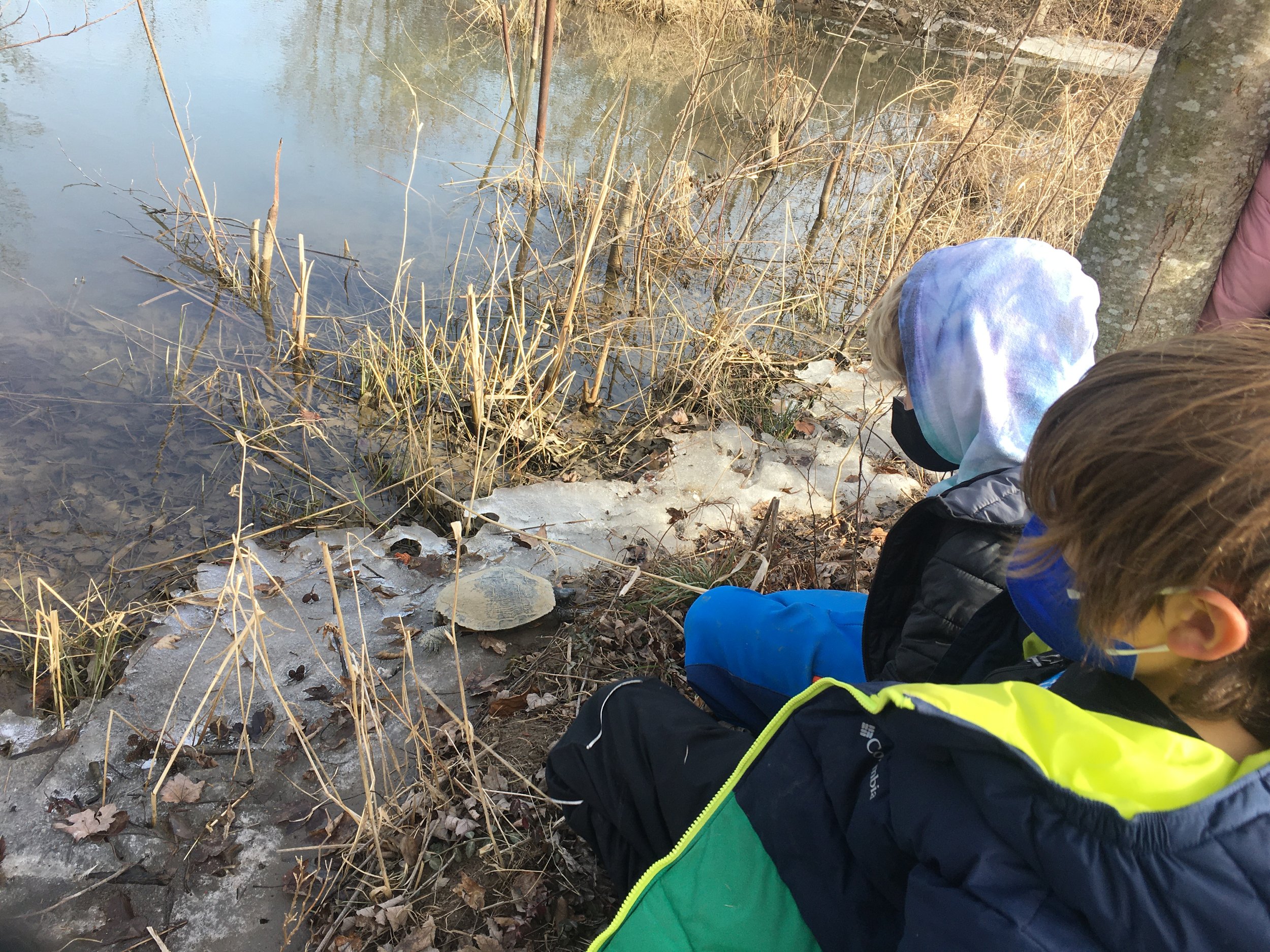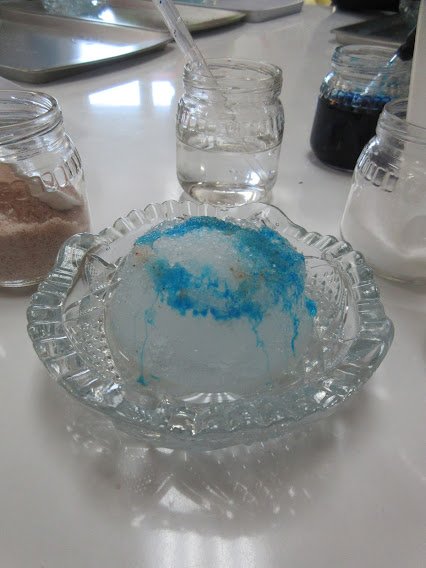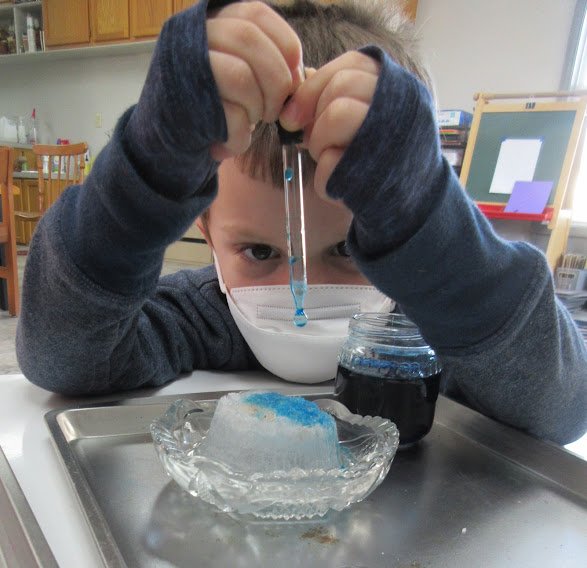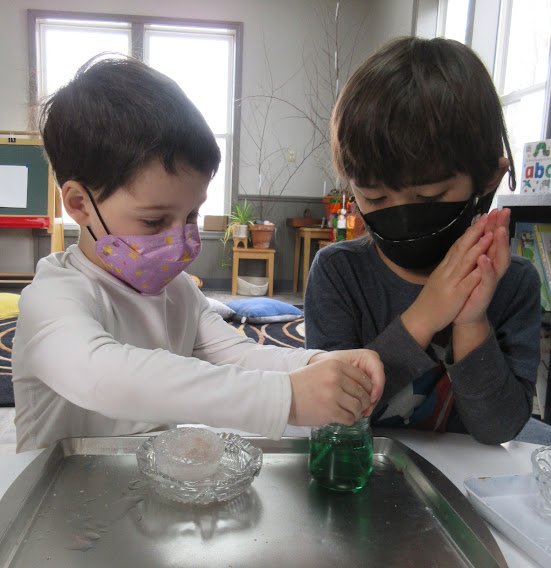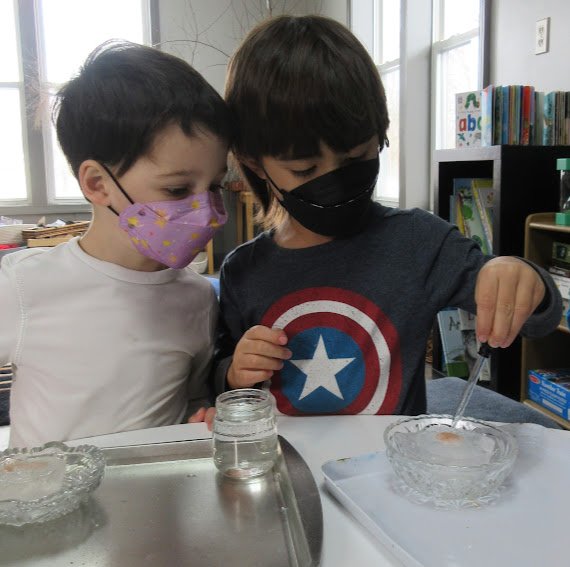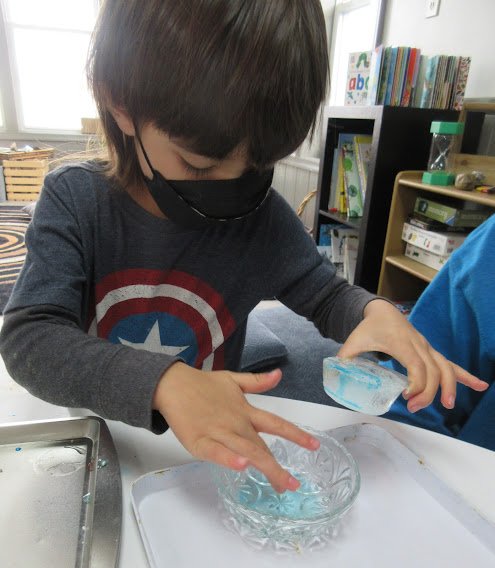Walnut Racing and a Kenyan Meal - a message about the week from our 3rd/4th grade teacher
We finished last week with an authentic Kenyan meal as a part of our study that included reading about and learning about the culture of that country. As usual, the Expeditioners were completely interested in helping and tasting the unusual food, even though it had unusual textures and flavors. We will be coordinating a Zoom or FaceTime meeting with my son, who is currently in Kenya, to learn about differences between our everyday experiences and life there.
Math this week featured a lot of new content, and everyone has truly stepped up to a new level in terms of their math thinking. We worked on adding fractions and simplifying the answers, including mixed numbers. That work will continue for the remainder of the year. We have also added a few new math games to our diet: “Outnumbered” and “Speed” are recent favorites.
As a former scientist and science teacher, I am most proud of their group experiment, which stemmed from the “Walnut Racing League” that the students invented last week! We did a controlled experiment to study the rolling behavior of walnuts. We then calculated descriptive statistics, including the mean, median, range, and mode of their walnuts’ rolled distances. Finally, they made their most “intense” (their words!) graph of the data so far.
A Winter Day with the 2nd/3rd Grade Adventurers
It was so good to be back at the farm on Monday and Tuesday! We revisited Pine Needle Village, and the children settled right into play scenarios that had them fully engaging in the space and with each other. Their shelter building in the woods explored how to build a lean-to using two tall pieces of wood leaned against a support beam, to which many other long branches were stacked and laid horizontally to form the wall. The mud on Tuesday provided the perfect medium for filling in cracks between those branches. Friends stepped around to the shelter side and proclaimed, “That mud really helps! It feels so much warmer over here!”
Seeking active ways to do our learning, four hammocks were hung so the children could swing while reading or listening to and discussing our read aloud, Who Is Martin Luther King, Jr.?. Math involved some data collection this week in the form of pom pom slingshots. The students divided into two groups, shot their pom poms several times, counted their steps to where each landed, and recorded the data. They then had to add to find their total and divide by their attempts to find their average. We used this data to explore mean, median, and mode. When we repeated the slingshots the second day, I heard things like, “C’mon! My mode is eight again?! I got that yesterday.” “My modes are 10 and 7.” “Hey, I have two modes, too!” The students settled right into the rhythm of shoot the pom pom, record the result, and repeat. It was wonderful to see them so engaged and hear them independently demonstrate their understanding of the concepts.
A turtle?
The 1st and 2nd graders took a walk to the nature space by Giant on a recent Friday afternoon. As we walked the trail, looking for spots to sit by ourselves for a little while to observe the nature around us, one friend spotted a turtle. “Hey, guys! I see a turtle!”
“Wait, a turtle?” Friends hurried toward the spot to gather and get a glimpse of this rare sight in February.
“Is it okay?” One friend got a long piece of grass and proceeded to touch the turtle’s leg, watching to see if it would move. The turtle was all black and fairly big, at least 8 inches from top to bottom of the shell and 6 inches across. Friends gathered round to watch the turtle and wonder about it. “Why is it out now? There’s snow on the ground.”
“Will it be okay?” Friends held their collective breath, fearing that maybe the turtle was not alive. Then, slowly, ever so slowly, the turtle moved its head. A collective sound of relief emitted from the group. Once everyone knew the turtle had moved, there was a sense that it was all right. Friends dispersed to find their own sit spots, with half the friends choosing to remain within view of the turtle to keep a watchful eye on it. Grateful for the life of the turtle and the opportunity to see it, we settled in to our sit spots for some quiet observation and thought.
“Take a walk with a turtle. And behold the world in pause.”
Wondering Led to Experimenting
On a walk to the park one winter day after a freezing rain storm, Explorers found some “pink stuff” on the sidewalk. “It’s pink ice!” “It’s tiny rocks.” “What is it?” We looked around and noticed there was no ice on the sidewalk where the pink stuff was found.
The next day we experimented with adding different types of salt to ice– fine salt, coarse salt, and pink salt. We also added plain water, and blue and green water, too, -well just because :)
At first, friends simply enjoyed the process of adding salts and using the pipettes to add the water. Then they noticed the effects. “My salt is wet.” “The salt is stuck.” “The ice is bumpy now.” “The salt is making the ice more water-ly-er!” Friends continued adding salt and water as long as they wished.
The next day, the same activity was offered. This time, friends were more intentional about how they added the salt and water. Some friends sprinkled the salt around the surface. Others mounded the salt into a heap in the center of the ice. “Mine has lots of little holes already” “Mine has one big one.” After a while, we compared the ice that had salt sprinkled all around to the ice that had salt in heap in the center. We noticed that when the salt was sprinkled around, the ice melted more, and there was more water.
Conclusion: We decided that if you use ice to melt snow on the sidewalk, it would work better to spread the salt around rather than heap it in one place. (And we love our new word – water-ly-er!)
“Are we forming children who are only capable of learning what is already known? Or should we try to develop creative and innovative minds, capable of discovery from the preschool age on, throughout life?”
Nature School in the Time of COVID-19
We’ve reached the end of the school year, and we’ve been silent for quite a while. In the middle of March, we went to remote learning like most everyone else in the country. We started off unsure what we felt good about offering, especially given the age of our students (3-9). We realized that collectively all of us were going through a major life shift. The children were experiencing all the same emotions we were whether they were able to articulate it or not, whether we recognized it or not. When children are dealing with the kinds of emotions that come with major change, time in nature playing, engaging in an activity with no practical purpose, is what is best for children. Spending time on a device seemed counter intuitive to us.
We decided to offer “suggested” activities knowing that it may not work out for families to use what we suggested, and we certainly didn’t want to add to the stress that everyone was feeling adapting to sheltering in place, working from home with children present. We supported those activities with links to resources that would be needed and tried not to offer anything too complicated or that would require materials that may not be available in everyone’s homes.
There was one aspect of using technology that appealed to us and that was using it for connection. When we thought about what part of our program could be adapted to an online format, our morning circle time made the most sense. When we met in person, our morning circle was a time to connect as a community, and there were repeated elements that would easily carry over to an online format that we thought might help children since they were familiar with them. From this, morning zoom circle was born. We carried on with our calendar cup, sang our morning song, did some mindfulness practices, read a book, and had a time for the children to share. Each day we offered a nature wondering that we hoped would encourage the children to get out and explore and wonder!
Over time, we added other online activities that we could feel good about. We added a Friday frolic opportunity for children to connect and play a game together. We did read alouds. We offered sing-alongs. We also offered books that could be read online. Mostly we hoped that children would get outside and play!
We will share some of our suggested activities here on the blog as a resource and/or inspiration. We derive most of our inspiration from watching our students play so without that we looked to what we were drawn to when we spent time outside, and I also had my children to inspire me. Many of our activities are very seasonal, but some could be done at any time of the year.
We look forward to sharing these with you!
In a Jar
FRIENDSHIP IS MAGIC
This story demonstrates facets of social and emotional learning. These skills are not easily measured and therefore, sometimes less valued; yet, they are foundational for future academic learning. I hesitated to write about this event. This was a deeply personal time for our youngest group, but the understanding and the expression that these young friends showed are worth sharing.
We were saddened to learn that one of our friends would not be returning to school after winter break. N- is a well loved friend! I wanted a way to honor him and his time with us as well as help the group process this change to our learning community.
Like most of our friends, N- loves to collect treasures! The book, In a Jar, by Deborah Marcero seemed a perfect starting place for us to ponder friendship, memories, and change. The main character, Llewellyn, is a collector. He collects ordinary things in jars. Then he meets Evelyn, and together they collect extraordinary things. When they hold the jars and peer inside, they remember all the things they have seen and done. A sad day comes when Evelyn moves away leaving Llewellyn’s heart feeling like an empty jar. One night, he sees beautiful falling stars and wonders if his friend can see them too. He collects the meteor shower in a jar and sends the jar to Evelyn. Llewellyn found a way to honor their friendship.
The first day back, N-s absence was noticed by friends. We shared how we felt about N- and how much we will miss him. Then I read, In a Jar. I offered the idea of filling a jar with treasures for N-, and I showed them an empty jar. We had a good conversation about the story and the illustrations, but there wasn’t much interest in filling the jar, yet. We read the book the next day. There was more very meaningful discussions. “How do you fit the sound of the ocean in a jar?” “Can you put a fox in a jar?” “No!” “You could put a picture of a fox in a jar.” Some friends began creating messages and pictures and placing them into the jar.
The next day we were at the farm. We read the story again. This time friends were paying very close attention to the details of both the illustrations and the language. “It’s magic! Magic fills the jars.” “When they open the jars, they remember all they did!”
With this reading, friends seemed to truly understand the metaphor of the empty jar. And they appreciated how Llewellyn connected to his friend.
We put items from the farm and our learning materials into the jar. Some of the manipulatives from our numeracy bags were added. “Blue gems! Blue is N-‘s favorite color.” Friends added seashells, stones, ribbon, and string. I added a small toy bird. N- loves birdsongs. We also added a boundary marker, “So N- will remember the Magic Forest!” We passed each item around and placed them all in the jar.
We then took a small magic wand. Each friend was asked to say or think some kind thought to N- and tap the jar to fill the jar with the happy thoughts. The magic wand was added to the jar. You can never have too much magic!
The jar was becoming very full! I thought we might be done, but as we were on a walk, friends added some special sticks and a beautiful leaf. Then I heard, “Here’s a walnut half.” “Remember? We collected walnuts last fall?” “Let’s put it in the jar for N-!” “Here is another one. Add it, too. Now it’s like a whole one in there.” Then one friend remembered that N- likes wild chives. We hunted and found some to add to the jar. The jar was full of treasures and happy thoughts! Went sent the jar to N-. We had found a meaningful way to connect with our friend.
This was a wonderful, group exploration of imagination, friendship, and memory!
“Sometimes you will never know the value of a moment until it becomes a memory.” – Dr Suess





